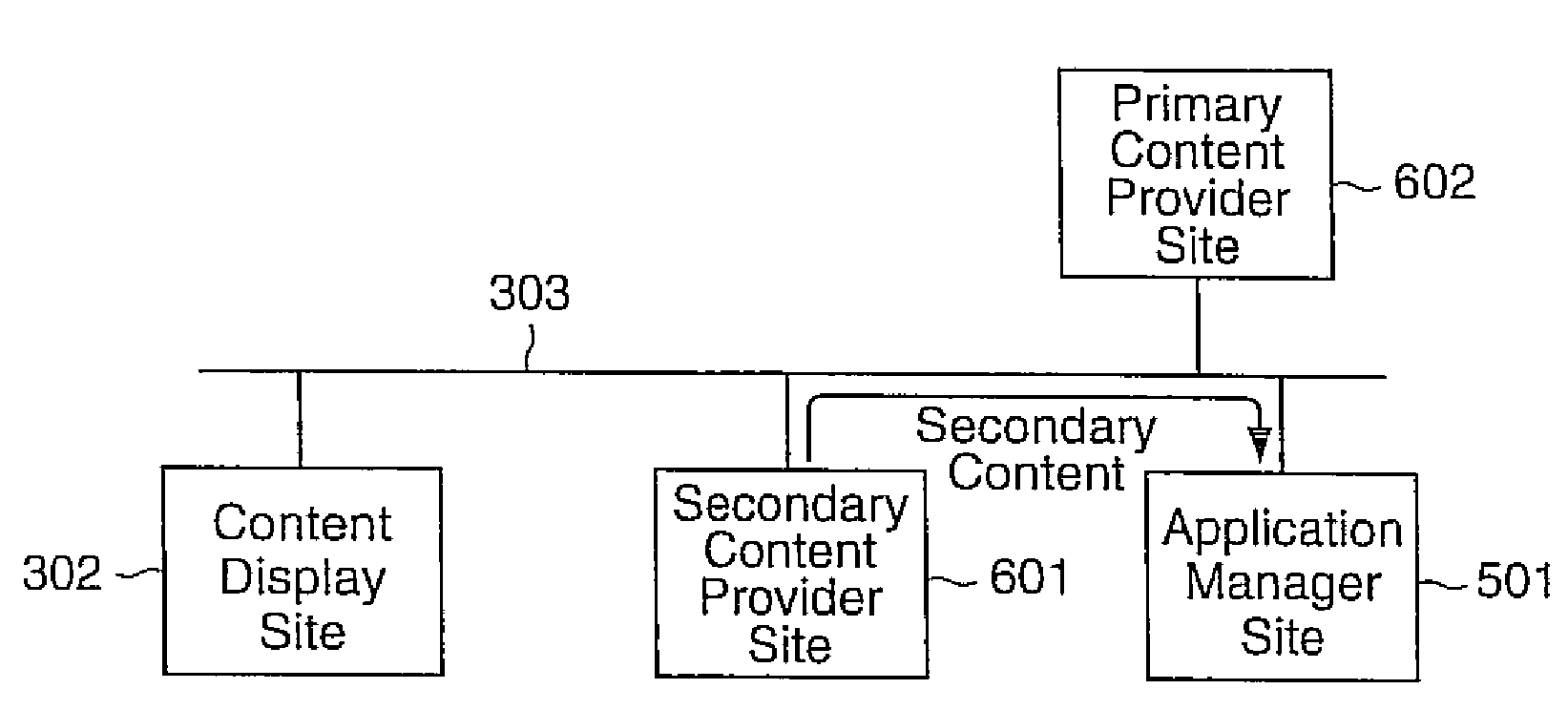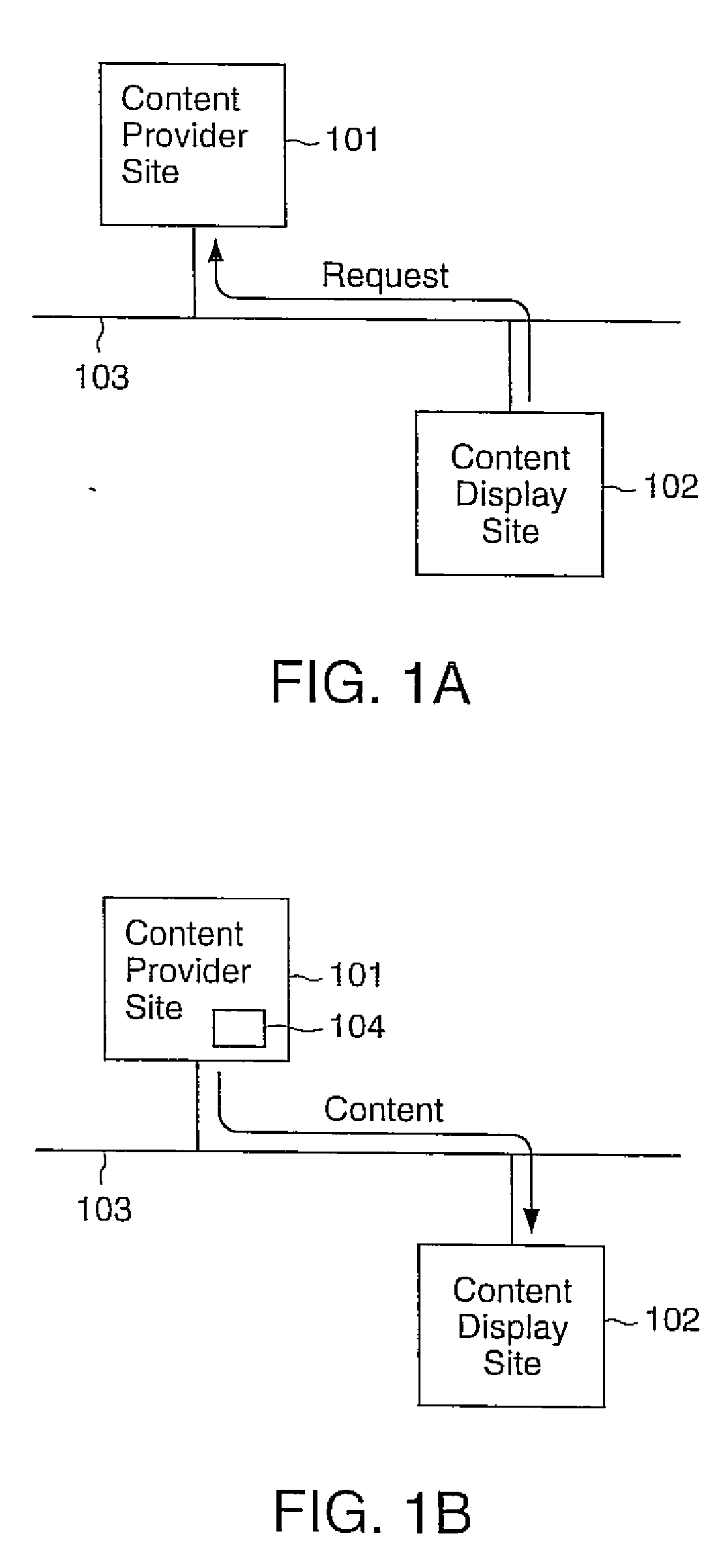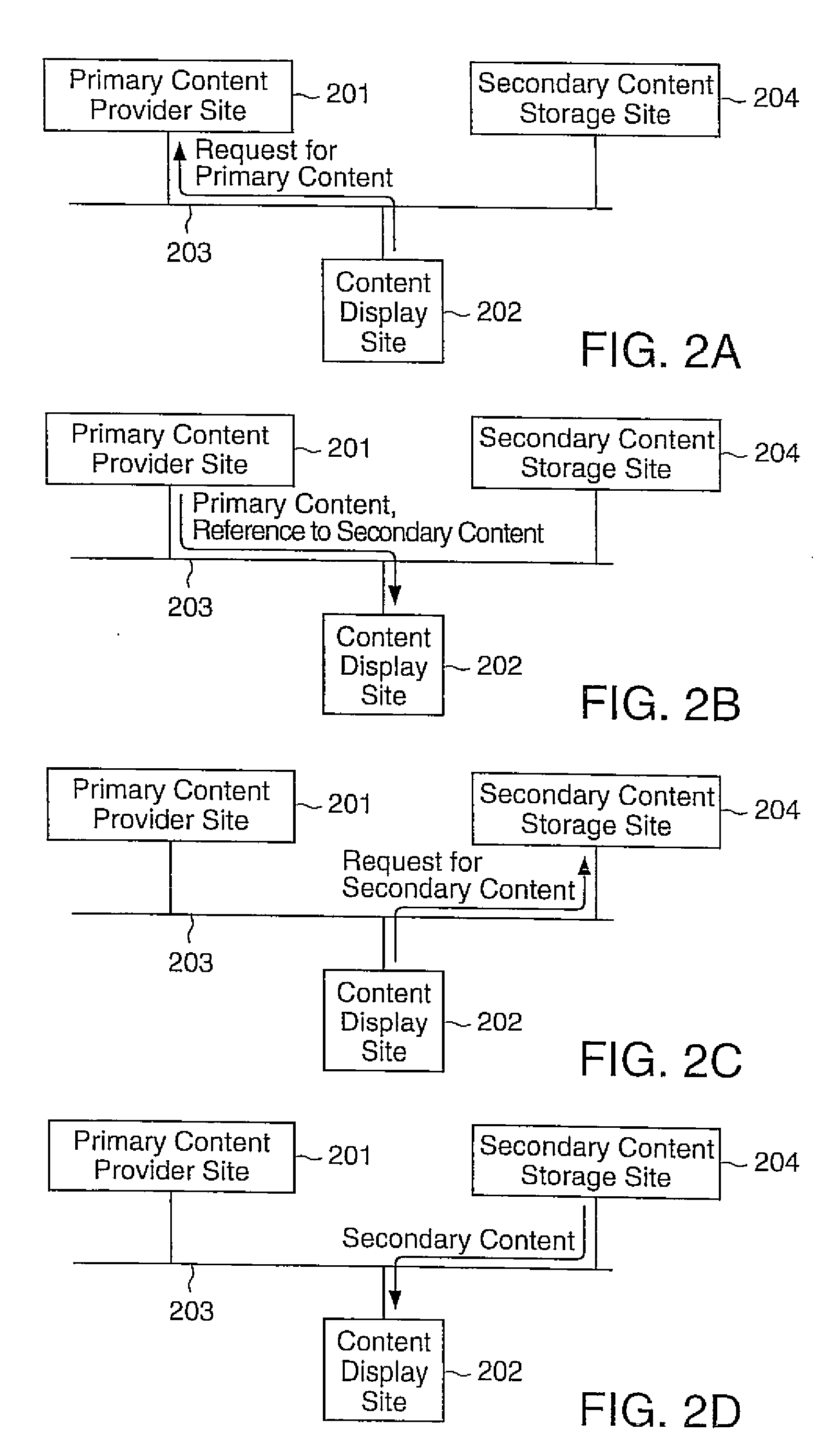Content display monitor
a display monitor and content technology, applied in the field of content display monitors, can solve the problems of inability to control the display of information once disseminated, inability to monitor the display of advertising (or other content) disseminated and inability to monitor the display of advertising (or other content) over a computer network. achieve the effect of simplifying the use of the invention
- Summary
- Abstract
- Description
- Claims
- Application Information
AI Technical Summary
Benefits of technology
Problems solved by technology
Method used
Image
Examples
example 1
[0049]
The instructions shown in Example 1 are executed by a conventional browser implemented on a computer at a content display site when an observer at the content display site makes a request for (e.g., selects a hyperlink) the content represented by the file “southwest.gif.” The request is received by an http daemon at the appropriate content provider site. The instructions identify the location (“image”) at the content provider site of an applet (a small application program) called “AdInsert” that includes further instructions which, when executed, perform a monitoring method according to the invention, as well as cause the content to be displayed. (The steps that can be implemented in such a monitoring method are discussed further below.) Upon receipt of the request by the http daemon at the content provider site, the AdInsert applet is transferred to the requesting content display site and begins executing. The instructions in Example 1 also establish the size of the area (wi...
example 2
[0051]
Thus, previously, it has not been possible to monitor content transferred from a content provider site on the World Wide Web once the content has been transferred to the content display site. As can be appreciated, then, this aspect of the invention provides a powerful tool, not previously available, for obtaining information about how content is displayed on a computer network such as the World Wide Web.
[0052] Implementation of a monitoring method as described immediately above means that the operation of the monitoring method is coincident with the display of the content to be monitored. Since the monitoring method does not operate when the content is not being displayed, the monitoring method expends processing capability of the computer system at the content display site only when necessary. At the same time, operation of the monitoring method at all times when the content is displayed is assured.
[0053] Further, since the monitoring method can be implemented as part of ...
example 3
[0093]
The database residing on the computer at the application manager site can also be used, for example, to store account information about the content provider site from which the content display is provided.
[0094] In the embodiment of the invention illustrated in FIG. 5, a user interface (e.g., GUI) can be provided on the content provider site computer to enable the owner (or representative) of the content provider site to access monitoring information stored at the application manager site regarding content displays provided by the content provider site. Such an interface can also be configured to enable the content provider to create a new account on the application manager computer, authorize payments for use of the monitoring system of the invention, and request particular analysis or presentation of obtained monitoring information. Other functions can also be provided in such an interface, as desirable.
[0095] It is also possible that there be multiple application manager...
PUM
 Login to view more
Login to view more Abstract
Description
Claims
Application Information
 Login to view more
Login to view more - R&D Engineer
- R&D Manager
- IP Professional
- Industry Leading Data Capabilities
- Powerful AI technology
- Patent DNA Extraction
Browse by: Latest US Patents, China's latest patents, Technical Efficacy Thesaurus, Application Domain, Technology Topic.
© 2024 PatSnap. All rights reserved.Legal|Privacy policy|Modern Slavery Act Transparency Statement|Sitemap



